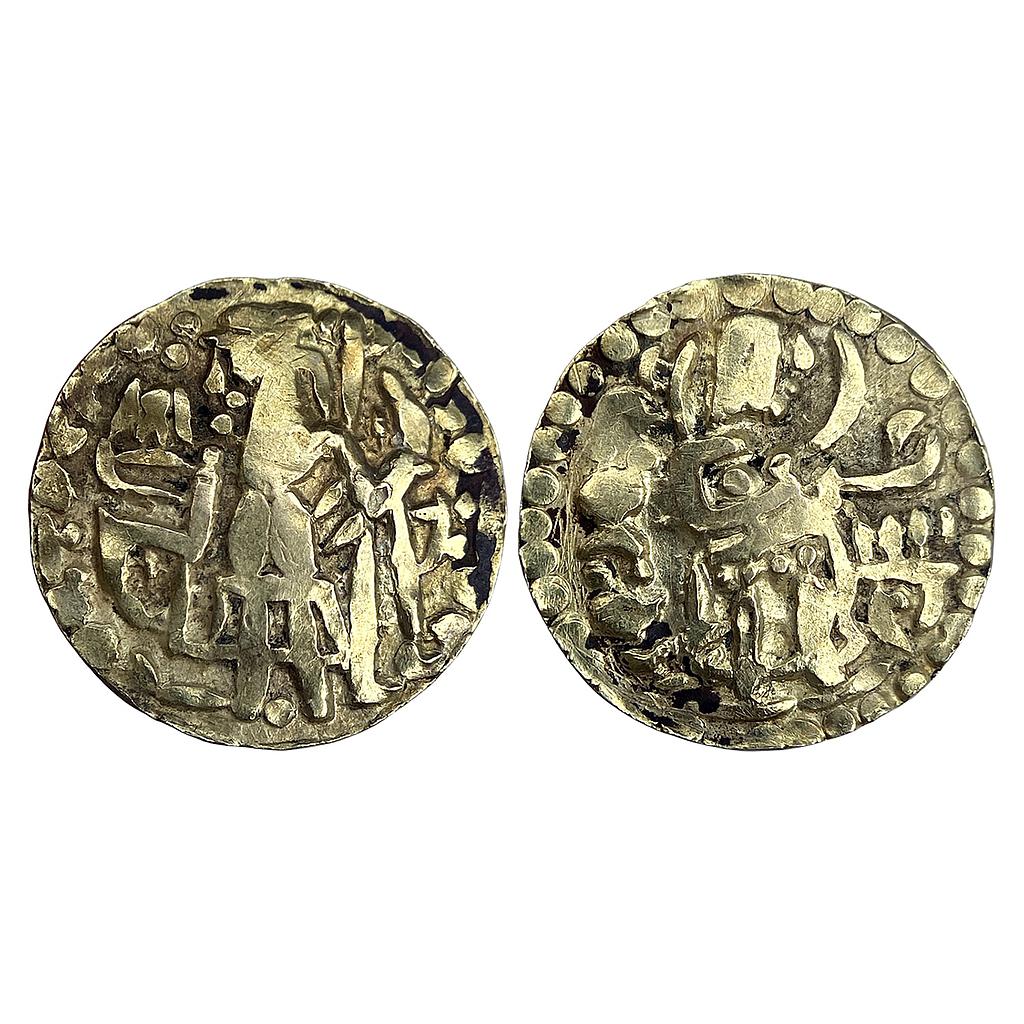Lot 33
Ancient India Samatata region Gold Dinar
Auction # 19 Lucknow (Online)
- Estimated Price (INR)
- 80000 - 100000
- Unsold
-
Auction Completed!
- Catalog Reference #
- S K Bose and N. Nasir Page 147 # SAM1C.2
- Metal Composition
- Gold
- Lot Grade/Condition
- very fine
- Diameter
- 22.99 mm
- Weight
- 6.27 gms
- Denomination
- Dinar
- Calendar/Year
- Circa 400-600 AD
Ancient India, Samatata region, (Circa 400-600 AD), Gold Dinar, 6.27 gms, 22.99 mm, Obv: Same as above but seem to be a Garuda on the left field of the coin. The top of the trident is seen on the right field of the king. The posture indicates that the king is holding a bow in his left hand and a trident at top. Likely to be a transitional variety and with a combination, Rev: Representing a crude shaped female deity apparently in sitting posture, The obverse design shows a combination of features seen in both Kushana & Gupta coins. Presumably it was struck during the transition period and gradually the style moved in to the Gupta style instead of Kushana, In the early centuries AD the famous Silk Road trade route across Asia had a southern extension in the Indian Ocean, where trading craft from China called on ports at the mouth of the Ganges in modern Bangladesh. From Chandraketugarh and Tamrapliti, goods traveled upriver either to India proper or the Kushan lands to the north. The importance of this trade lead to the first striking of local gold coinage in Bengal; these being crude copies of dinars of the Kushan kings Kanishka I and Huvishka. In the late 2nd-early 3rd century a local king, Vira Jadamarah of Samatata struck other imitations, this time in his own name. By the early 4th century central India came under the control of the Guptas, and contact with the north was disrupted. At that point Gupta coinage replaced the Kushan imitative issues, which remained unknown until the 1970's, when the first pieces were identified, Ref Early Coinage of Bengal ( C 2nd Century BC to 10th Century AD) With notes on Harikela and Akara Coins By S K Bose and N. Nasir Page 147 # SAM1C.2, very fine, extremely rare.
